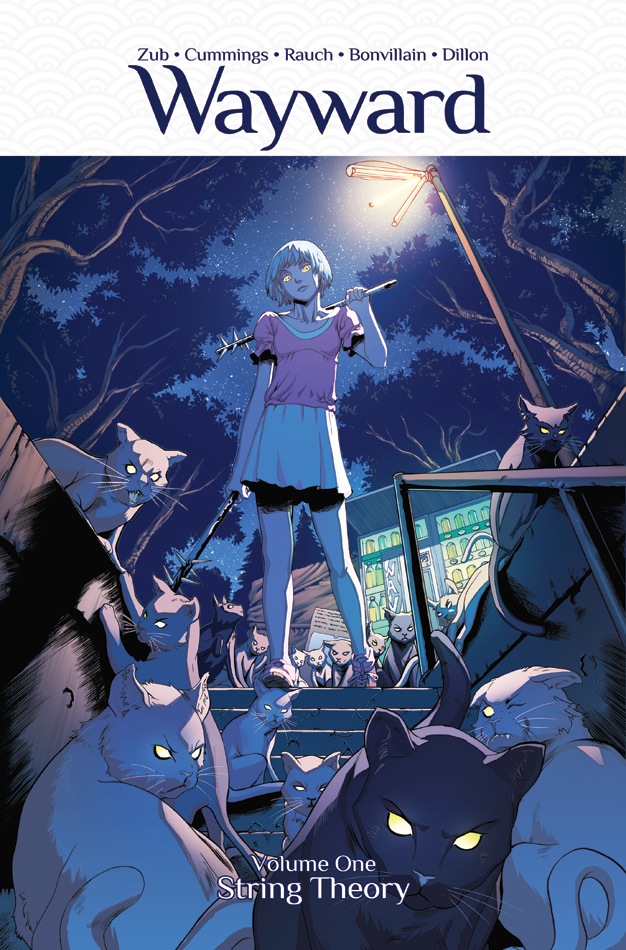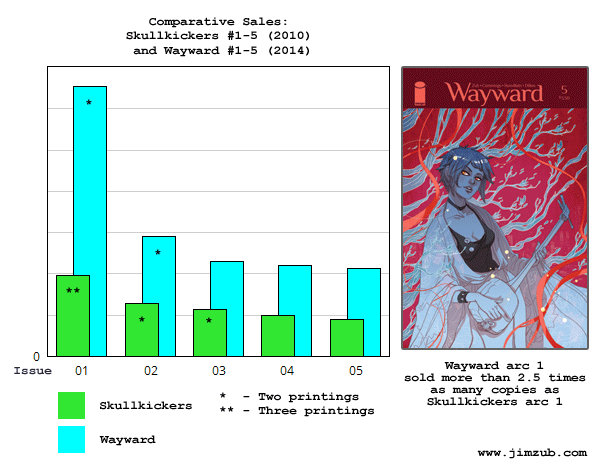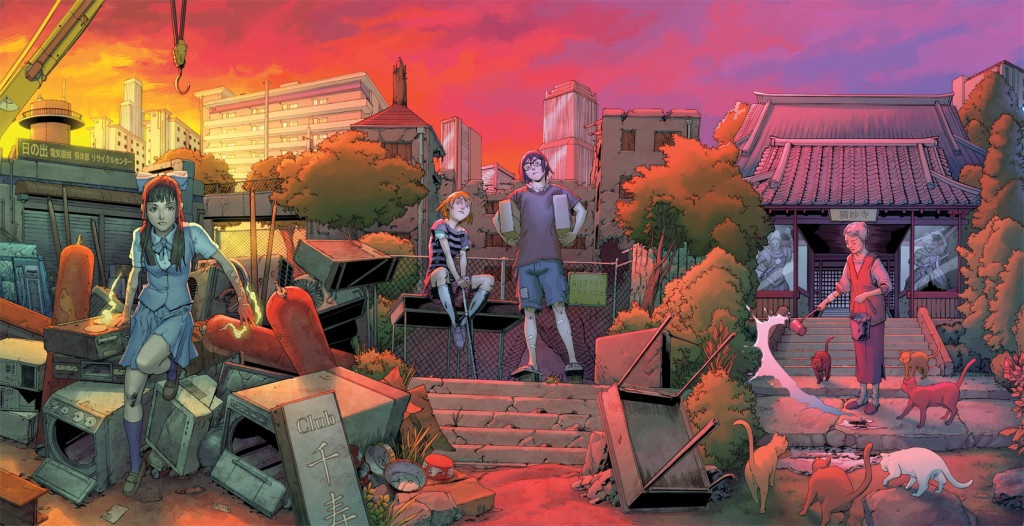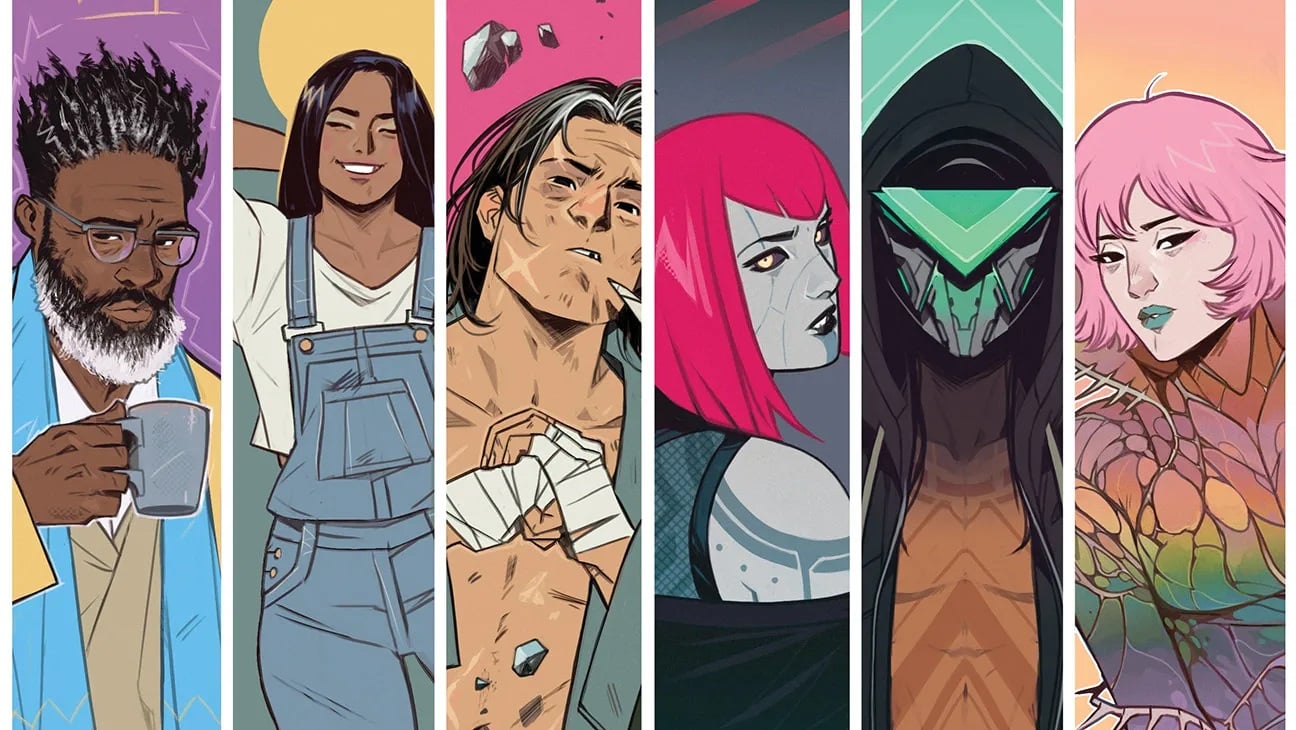And when I say must-read, I mean MUST READ, as it really lays out fundamental changes in how the industry is working for creator owned books.. A few days ago I noted how an old post on the economics of Jim Zub on Skullkickers, his Image comics, had gotten a second life on Facebook with it’s very low numbers on comics profits. In the comment, Zub promised an update, and he’s delivered with an analysis of his new book, Wayward. As you can see from the above graph, it’s a HUGE change, and it’s all due to the rise of Image Comics:
The Image model has always been about investing in yourself and reaping the benefits of that investment if sales are strong. I knew that going in with Skullkickers back in 2010 and, even when our sales were borderline unprofitable, I stuck with the series as a way to establish myself as a writer and show people our team could produce a high quality comic month after month. Now, four and a half years later, I’m seeing the benefits of that consistency and the growing creator-owned market with my new Image series called Wayward.
Zub enumerates a number of ways Wayward has surpassed Skullkickers, including his larger profile in the industry at large, and the material being more suited to today’s market: “Cute supernatural teenage girls (surrounded by cats) kicking the shit out of monsters on the street of Tokyo plays to a bigger audience than a bro-centric slapstick violent D&D tale, especially in 2014-2015.” While you should read the whole thing, one particular bullet point is worth highlighting:
• Retailer Outreach: I’ve also done a ton of retailer outreach over the past four years. Having well regarded work is wonderful but only if retailers feel confident they can sell the books. As we headed towards the launch of Wayward, the crew at Image and I did a lot of communicating with retailers about the series, showing them exclusive artwork and previews, doing everything we could to prove to them that this was a series they could confidently sell to their customers. That lead to several comic shop and convention-exclusive variant covers for Wayward #1, bolstering our launch numbers by thousands of copies while creating extra interest in the series.
While some may see the “variant method” as a danger sign, I think the numbers on these variants are still low enough on an individual basis to avoid threatening overall comics sales. It’s also CRUCIAL that today’s retailers are more open to diverse material. I don’t like to live in the past, but some of my 90s conversations with retailers begging them to consider selling Simpsons comics spring to mind. But you know it was a different world 20years ago. It’s a different world than it was even FOUR years ago. While Zub notes that neither he nor Wayward artist/co-creator Steve Cummings are rolling in dough, they have enough to pay the rest of the team, and for Cummings to work on the book full time. AND they have a war chest to help promote and keep the book on its successful sales trajectory.
Zub notes that the first Wayward trade paperback is coming out in March, so even his numbers post serves as a way to promote the next work.
Good sound tips all.
Above: the triptych cover for Wayward #6-8 by Cummings.











That update is strikingly low on actual numbers compared to the original.
Isn’t Wayward #1 has almost more variants than Marvel’s Star Wars?
It’s hard to get a real feel from the comparison of the 2 titles; I wonder if some of the additional sales of Wayward compared to Skullkickers is due to the target market, art style, and the increased confidence in the creators. Is it easier to sell the second series because the first series was successful?
Secondly, how do you encourage retailers to promote an indie title when the staff of the store is more into superheroes than all ages titles?
I would love to see more independent all-ages titles on the shelves, too. Not just the the all-ages books that also have a TV show behind them. However, I’m not sure customer traffic is there for most retailers to boost those orders. This might be a case where the all-ages content might be doing better online — since today’s kids see less difference between a digital book and a print copy.
As for Zub’s analysis on his books, I think it speaks volumes about the market and the perceived value of name recognition. Likewise, I think today’s market is more balanced than even 5 years ago. Or perhaps I should say, it appears more balanced in the eyes of the retailers. Female readers have always been part of the audience, but I think the perception of a female lead comic (cute girls with cats fighting monsters) that can sell is something the retailers have caught up with since they now see the awareness with other indy books. However, the statistics are based on his trajectory for his books. It’s not one-size-fits-all, nor do I think he is saying that.
It’s kind of about being at the right place and time — which is akin to catching lightning in a bottle.
Whatever the reason I am glad that Jim Z is making this new series work and that he is moving up in the industry and that he is sharing his experience of growth. I like to think that a high tides raises all boats.
Comments are closed.